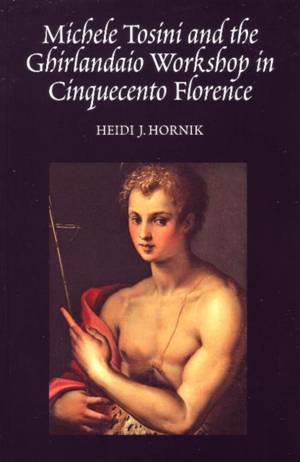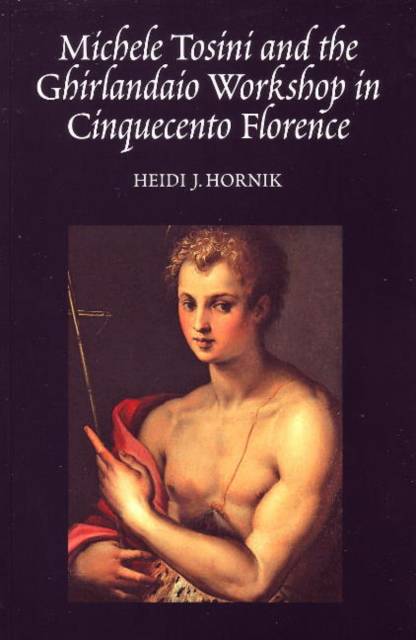
- Afhalen na 1 uur in een winkel met voorraad
- Gratis thuislevering in België vanaf € 30
- Ruim aanbod met 7 miljoen producten
- Afhalen na 1 uur in een winkel met voorraad
- Gratis thuislevering in België vanaf € 30
- Ruim aanbod met 7 miljoen producten
Zoeken
Michele Tosini and the Ghirlandaio Workshop in Cinquecento Florence
Heidi J Hornik
Paperback | Engels
€ 110,45
+ 220 punten
Omschrijving
This book sets out to establish Michele Tosini's critical role in sixteenth-century Mannerist art in Florence. He was well-trained, well-educated and well-liked, and created a highly productive workshop environment that not only succeeded but thrived in one of the most competitive ages of artistic production in the history of art. To date, scholarship executed on Tosini (Carlo Gamba in 1928, Sydney Freedberg in 1974) has produced a plethora of misunderstandings about Tosini's role in the Florentine artistic community. The verdict that Tosini was a 'hack' painter who could make his works look like those of more 'established' painters in order to get commissions, and that he was an uneducated 'second-rate' painter who could not formulate complex iconographical programs, is at odds with the evidence presented in this current research. Tosini was much more than just 'the right man in the right place at the right time'. He not only promoted Mannerism, but was part of its process; indeed, the formation of the Accademia del Disegno took place at the height of his artistic career. Given his business acumen it is perhaps understandable that;misunderstandings; have arisen. (To borrow from William Wallace, Tosini can legitimately be thought of as 'Genius as Entrepreneur'.) This is not only essential reading for all students of Late Renaissance / Mannerist art history, but a majestic story of the process of artistic endeavour and how it unfolds that is so deeply admired today.
Specificaties
Betrokkenen
- Auteur(s):
- Uitgeverij:
Inhoud
- Aantal bladzijden:
- 211
- Taal:
- Engels
Eigenschappen
- Productcode (EAN):
- 9781845191863
- Verschijningsdatum:
- 11/05/2021
- Uitvoering:
- Paperback
- Formaat:
- Trade paperback (VS)
- Afmetingen:
- 150 mm x 226 mm
- Gewicht:
- 362 g

Alleen bij Standaard Boekhandel
+ 220 punten op je klantenkaart van Standaard Boekhandel
Beoordelingen
We publiceren alleen reviews die voldoen aan de voorwaarden voor reviews. Bekijk onze voorwaarden voor reviews.











